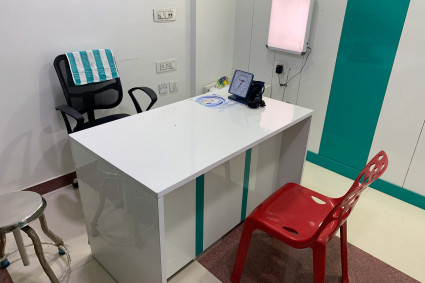Volleyball is a fascinating sport that requires quick reflexes, agility, and precision in movement. The fast-paced nature of the game can cause ankle injuries, regardless of whether you play for fun or are a professional player. In volleyball players, ankle pain can range from little discomfort to serious injury. We will look at practical ways to avoid, treat, and recover from ankle discomfort brought on by playing volleyball in this extensive guide.
The Effect of Ankle Injuries in Volleyball: Understanding
In volleyball, players are noted for making unexpected leaps and quick direction changes. The ankles are put under a lot of strain by these activities, which increases the risk of injury. Sprains, strains, and in more serious situations, fractures, are frequent ankle injuries in volleyball. Your ability to play the game you like may be hampered by these ailments, which can be uncomfortable.
If you like playing volleyball or are a volleyball player, you can take the painkillers Tapal 100mg and Tapaday 200mg to treat an ankle injury you may have had while playing the sport. Make sure to speak with your doctor.
Preventive Actions
A long and fulfilling playing career depends on preventing ankle injuries in volleyball. By taking the following precautions, you can dramatically lower your likelihood of experiencing ankle pain:
A. Suitable Shoes and Ankle Support
The first line of protection against ankle problems is selecting the proper footwear. Please take into account the following advice:
• Opt for ankle-supporting footwear: Choose volleyball shoes that offer plenty of ankle support. Ankle stability during lateral movements can be improved by wearing high-top shoes with padding around the ankle.
• Purchase ankle braces: If you have a history of ankle problems, purchasing ankle braces might add to your safety. The ankle joint is given additional stability by these braces.
B. Exercises for warming up and stretching
To get your body ready for volleyball's demands, you need to warm up and stretch properly.
Stretching that is dynamic Your pre-practice and pre-game regimens should include active stretching activities. Stretching should concentrate on the calf, Achilles tendon, and ankle muscles. Dynamic stretching lowers injury risk by increasing flexibility and blood flow.
C. Precision Landing Methods
Volleyball players must master the art of securely landing following jumps:
• Softly land: Get in the habit of doing so following leaps. To equally spread the force across your lower body and absorb it, bend your knees. Your ankles may be overextended if you land with rigid legs.
• Avert clumsy landings: Keep an eye on where you are going on the court. Avoid uncomfortable landings, such as ones that involve touching the foot of another player or a crooked surface. Ankle injuries may result from these.
First Aid in the Moment
Injuries can still happen despite taking precautions. Immediately providing first assistance after suffering an ankle injury can have a big impact on how quickly you recover:
A. RICE Rest, ice, compression, and elevation are the methods.
If you feel that you may have hurt your ankle, stop playing right away and get some rest. An ankle injury might get worse if you keep playing on it.
• Ice the region: Ice the wounded area as quickly as you can. Ice eases discomfort and helps to minimize swelling. With intervals in between, apply it for 15-20 minutes at a time.
• Compression: Wrap the damaged ankle carefully in a compression bandage. The damaged region is supported by compression, which also reduces edema.
• Elevate the afflicted ankle: If at all feasible, elevate your damaged ankle above heart level. As more fluid may drain away from the wounded location, swelling is reduced as a result.
B. Pain Management When an ankle injury first develops, pain management is essential.
> Painkillers sold without a prescription Inflammation can be controlled and pain can be managed using over-the-counter painkillers such acetaminophen or ibuprofen. Always adhere to the dose advised.
• Comply with medical advice: Follow a healthcare professional's advice if you have serious injuries. For your comfort during the healing period, they could recommend particular pain management techniques.
Rehabilitation
Recovery from ankle injuries and avoiding chronic pain and weakness depend heavily on rehabilitation. As an alternative, consider:
Exercises used in physical therapy
A great technique to speed your healing is by working with a physical therapist:
Physical therapists should be consulted: Consult a physical therapist with training who specializes in sports injuries for advice. They are able to evaluate your condition and provide a specialized rehabilitation plan.
• Build up ankle muscles: Physical therapy activities concentrate on building up the muscles that surround the ankle joint. To regain stability and lower the risk of further injuries, it is crucial to strengthen these muscles.
• Increase range of motion: Maintaining flexibility in your ankles is essential for avoiding stiffness and improving your overall performance on the volleyball field. You can increase your range of motion using physical therapy exercises.
B. Gradual Return to Play Resuming volleyball play too soon after suffering an ankle injury increases the risk of reinjury. For a secure return, follow these steps:
• Seek advice from a health care provider: Consult a medical expert, such as a sports medicine physician or orthopedic specialist, before starting full volleyball activity. They can determine if you're prepared and, if necessary, grant clearance.
• Reintroduction gradually: Bring volleyball-related activities back into your regimen gradually. Start with simple drills and work your way up to full-game scenarios. This strategy lowers the chance of reinjury while allowing your ankle to strengthen and stabilize.
Prolonged Prevention
It's important to think about long-term injury prevention while preventing ankle discomfort in volleyball in addition to quick healing. Consider the following tactics:
A.Strength and dexterity Training
Your ankle muscles can get stronger and more stable if you exercise them frequently:
• Include consistent ankle stretching: Include particular workouts that concentrate on the muscles supporting the ankle joint in your training program. Concentrate on calf, Achilles tendon, and side ankle muscles strengthening exercises.
Balance exercises can increase your general stability and lower your chance of ankle injury. Simple exercises like one-foot standing or utilizing a balancing board can have a big impact.
B. Self-Care and Injury Awareness
Injury prevention requires self-care and paying attention to your body:
Observe your body: Any stiffness or soreness in your ankles should be closely monitored. Take it as an indication that you need to relax and recuperate if you have discomfort that doesn't go away. If pain is ignored, more serious injuries may result.
• Take breaks when necessary: Listen to your body and take breaks when they are indicated. When athletes push themselves too hard, overuse injuries can happen. Maintaining your performance and avoiding discomfort depend on getting enough sleep.
• Seek medical attention Consult a healthcare provider right away if you are in chronic or excruciating pain. Minor problems can be stopped before they become more serious with early action.
Conclusion
Instead of causing agony and frustration from ankle problems, volleyball should be an exciting and joyful sport. You may lessen the chance of ankle discomfort and injuries while having fun playing volleyball by adhering to these preventative steps, using prompt first aid, committing to rehabilitation, and adopting long-term prevention tactics. You should constantly put your health and wellbeing first to have a long and fruitful volleyball career.




